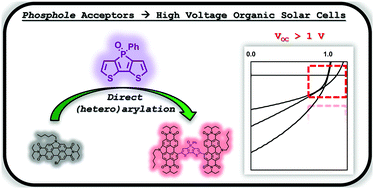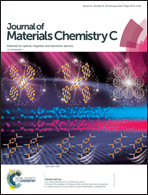Dithienophosphole-based molecular electron acceptors constructed using direct (hetero)arylation cross-coupling methods†
Abstract
Herein we report on the first successful coupling of the dithienophosphole (S2PO) functional building block with three types of heteroaryl end caps using direct (hetero)arylation C–H bond functionalization methods. As a model reaction, S2PO was coupled with ethylhexyl phthalimide. The reaction conditions were optimized to give yields up to 67%. Applying the optimized conditions to hexyl phthalimide and N-annulated perylene diimide gave yields of 68% and 49% for the corresponding products, respectively. Compounds were characterized by optical absorption and emission spectroscopy, cyclic voltammetry, differential scanning calorimetry, and thermal gravimetric analysis and compared with their phosphole-free analogues. It was found that incorporation of the phosphole resulted in a lowering of the LUMO energy level for both compounds compared to their analogues. The bis(perylene diimide)S2PO product was used as an acceptor in bulk heterojunction organic photovoltaic devices with three donor polymers. High Voc values of 1.0–1.1 V were obtained from devices spin cast from o-dichlorobenzene, a significant result for devices with non-fullerene acceptors.



 Please wait while we load your content...
Please wait while we load your content...